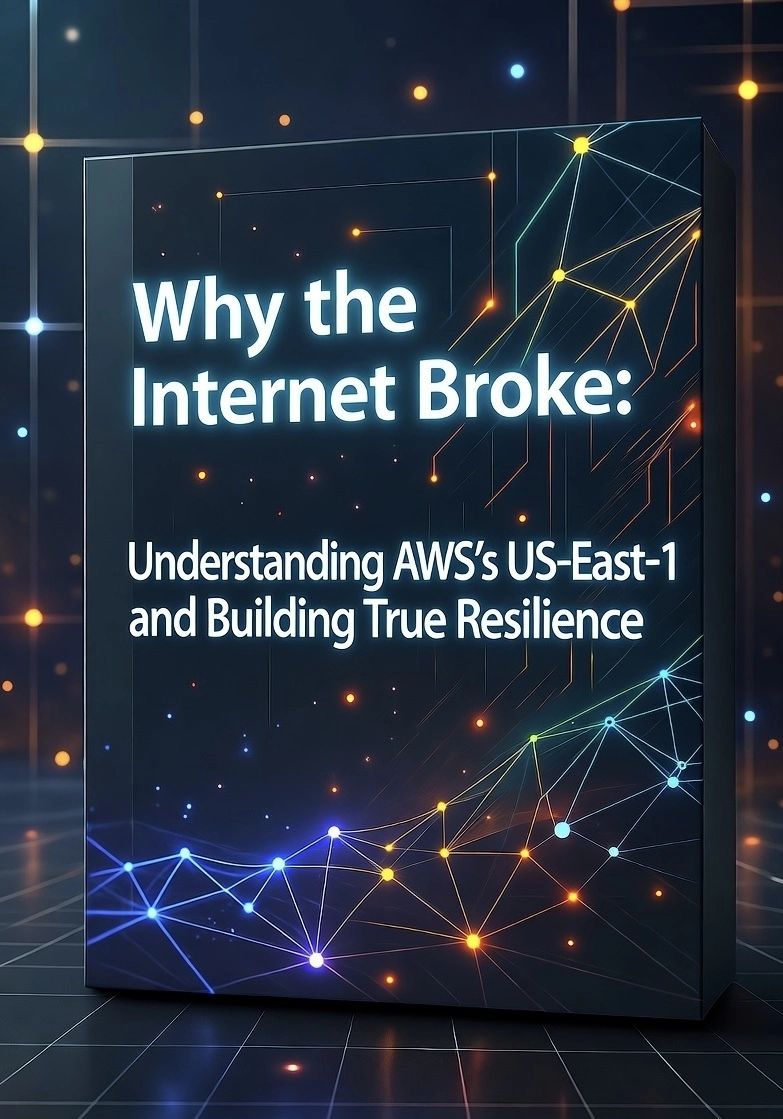If you’ve ever wondered what would happen if a single point in our digital universe collapsed, this passing week provided the answer. When AWS’s US-East-1 region in Northern Virginia stumbled, the internet held its breath. From banking apps to smart beds, services millions rely on vanished instantly.
The most puzzling aspect? Many of these services claimed to have multi-region architectures. So why did they fail? The answer reveals critical hidden dependencies and provides a vital lesson for every cloud architect and business leader.
The Digital World’s Beating Heart: AWS US-East-1
Think of US-East-1 as the grand central station of the cloud. It’s not just another data center—it’s AWS’s oldest, largest, and most critical region. Many global AWS services, control planes, and foundational features have their roots here, making it the default nexus for a massive portion of the global internet.
This region’s sheer scale means that when it experiences issues, the ripple effects are instantaneously global. As one expert noted, “When AWS sneezes, half the internet catches the flu.”
When the Heart Skips a Beat: The Recent Outage
What Actually Broke?
The disruption began with what sounds deceptively simple: a Domain Name System (DNS) resolution issue affecting DynamoDB API endpoints in US-East-1. DNS acts as the internet’s phonebook, translating human-readable addresses into numerical IP addresses computers understand.
An empty DNS record for the Virginia-based data center region—caused by a bug in automated DNS management systems—meant applications couldn’t locate their database servers. They essentially suffered from “temporary amnesia.”
The Domino Effect
This single point of failure triggered a cascading collapse across AWS services. The initial DNS problem impacted DynamoDB, which then affected services depending on it, including IAM, Lambda, and other networking components. The result? Increased error rates and latencies across hundreds of AWS services.
The Impact in Real Terms
The outage wasn’t just a technical metric—it translated to real-world disruption. Major platforms like Snapchat, Reddit, and Signal went dark. Financial services like Venmo and Robinhood faltered. Even smart home devices, from Ring doorbells to smart beds, stopped responding.
Beyond individual inconveniences, the outage had tangible business consequences: delayed flights, disrupted financial transactions, and frozen e-commerce platforms. The total financial impact likely reached into the hundreds of billions of dollars.
The Architecture Paradox: Why Multi-Region Wasn’t Enough
Here’s what baffled many observers: companies with multi-region deployments still went down. This exposes three critical hidden dependencies that architects often overlook.
First are Control Plane Dependencies. Many global AWS services, including IAM for authentication, house critical control plane functions in US-East-1. Even if your application runs in multiple regions, if it can’t authenticate users because IAM is impaired, your service remains unavailable.
Second are Global Service Endpoints. Services like DynamoDB Global Tables—designed for multi-region resilience—may still rely on US-East-1 endpoints for certain operations. When the foundational region experiences DNS issues, these global features can malfunction despite their distributed nature.
Third are Data Replication Dependencies. While services like DynamoDB Global Tables provide automatic multi-active replication, they may still depend on healthy endpoints in the primary region for replication coordination.
The painful truth this outage revealed: Having multi-region infrastructure isn’t the same as having regionally independent services.
Beyond the Breakdown: Architecting for True Resilience
The outage serves as a multi-trillion-dollar reminder that resilience must be an architectural imperative, not an afterthought. Here are essential strategies for building systems that can withstand regional failures.
➡️ Design for Complete Regional Independence
Audit your architecture for hidden cross-region dependencies. Scrutinize your control planes, global tables, and DNS configurations.
The goal is to ensure every region can operate autonomously if completely disconnected from all others.
➡️ Implement Intelligent Traffic Management
Use services like Route 53 failover routing or AWS Global Accelerator with its static anycast IPs.
These tools can automatically redirect user traffic to a healthy region within seconds—often without users even noticing an issue.
➡️ Choose Truly Global Data Services Wisely
Leverage services built for global resilience, such as DynamoDB Global Tables for multi-active database needs or
Aurora Global Database for SQL-based applications. Crucially, understand their failure modes and ensure
they are configured for true independence.
➡️ Embrace Chaos Engineering and Regular Testing
Don’t wait for real outages to test your resilience. Regularly conduct failure injection drills—simulate a complete
US-East-1 blackout—and verify that your failover mechanisms work as expected and that your teams can execute recovery procedures under pressure.
A Leadership Mandate: Beyond Technical Fixes
The US-East-1 outage underscores that resilience is not just a technical concern but a business imperative. As technology leaders, we must:
➡️ Evaluate the true cost of downtime against the investment in resilience.
➡️ Challenge assumptions about our cloud architectures’ independence.
➡️ Foster a culture of resilience where failure planning is integral to development, not a final checkbox.
The Path Forward: Resilience as a Feature
This outage wasn’t a condemnation of cloud technology, but rather a stark spotlight on systemic risk in our increasingly centralized digital infrastructure. The lesson is clear: assume your cloud region will fail someday, and build accordingly.
In an era where digital infrastructure underpins nearly every aspect of business and society, resilience must transform from a premium feature to a non-negotiable architectural mandate.
What hidden dependencies have you discovered in your cloud architecture? Share your experiences and resilience strategies in the comments below.
If you found this article valuable, repost it to your network and follow me for more insights on cloud architecture and digital resilience.





